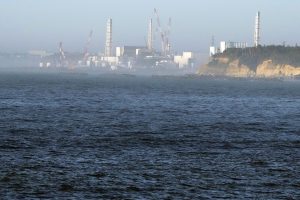The Japanese government is chasing a nuclear mirage 13 years after the Fukushima Daiichi nuclear disaster in March 2011. Government statements in support of nuclear power, such as the recent declaration at COP28 that Japan will triple nuclear energy by 2050, receive much attention. Away from the public spotlight, however, Japan is facing a nuclear energy policy disaster as it struggles to actually return to nuclear energy after the Fukushima nuclear accident.
As the Japanese government pursues a nuclear revival to no avail, the yawning gap between vision and policy reality jeopardizes important energy policy goals such as energy security and decarbonizing energy supply.
The share of nuclear power in Japan’s electricity mix has stagnated between 5 and 8 percent since 2018, and the goal to generate 20–22 percent of electricity from nuclear by 2030 has become elusive. Japan’s fleet of commercial nuclear reactors, once the third largest in the world at 54 units, has diminished to 33 plus two units currently under construction. Restarting these 35 reactors would barely be enough to meet the government’s 2030 targets. However, only 27 reactors are undergoing the safety reviews required for a restart permit. If successful, they can provide about 14 percent of Japan’s electricity mix by 2030, far from the government’s goals.
Actual restart progress is even more bleak, with only 12 reactors back on the grid by early 2024. Plans to start using the Onagawa plant’s reactor number two for electricity generation in May 2024 had to be postponed to September due to delays in additional safety construction work. For the Tokai reactor number two, work on safety measures is scheduled to conclude in September 2024, but it remains to be seen whether construction will finish on time. With the restart process riddled with setbacks and uncertainties, the total number of reactors actually generating electricity looks to increase only marginally over the next few years.
One potential solution to this problem, constructing new reactors, takes at least a decade and risks public backlash as safety concerns linger. The recent Noto earthquake was a reminder of safety risks as the earthquake partly exceeded assumptions made in safety checks and led to questions about the adequacy of emergency evacuation plans. Removing the official 40-year lifespan limit on nuclear reactors – introduced as a major safety lesson after the 2011 nuclear disaster – as part of Japan’s so-called GX (green transformation) strategy that will guide the country’s decarbonization appears as a rather desperate and potentially risky measure. The next generation of modular reactors stressed in the COP28 declaration on nuclear and the GX strategy are not even market-ready technology at the moment.
Japan’s nuclear energy revival is supposed to increase energy security and drive decarbonization. Chasing unattainable goals, however, has the exact opposite effect as the yawning implementation gap is continuously filled with fossil fuel imports.
It is time to embrace the solution at hand: expanding renewable energy capacity.
Increasing energy security has been a major goal of Japan’s energy policy ever since the oil shock in the 1970s. Dependence on fossil fuel imports, already high at 81 percent in 2010, shot up once all of the nuclear power plants were shut down following the Fukushima accident. What brought it down again to about 83 percent in 2021 was not nuclear restarts, but rather an increasing share of renewable energy. Nuclear power and renewable energy have essentially switched places in Japan’s energy mix as renewables increased from 4 percent in 2010 to 11 percent in 2021 and nuclear decreased from 10 percent in 2010 to 3 percent in 2021.
Additional coal and gas imports to fill the nuclear power gap not only keep Japan’s import dependence high, but also have a substantial impact on its greenhouse gas emissions. Aside from a small share of nuclear energy, low-carbon electricity mainly comes from renewables, which have seen an impressive annual growth at about 16 percent since 2012. The remaining 72 percent come from fossil fuels. Once a climate leader in the 1990s, the current nuclear energy disaster solidifies Japan as a fossil fuel champion rather than a decarbonization leader.
In 2024, the Japanese government has an opportunity to turn things around. Japan’s Strategic Energy Plan, revised every three years, is due again. This presents an opportunity for the government to increase its renewable energy target, ideally in line with the international commitment made at COP28 to triple renewable energy capacity by 2050, and to reduce its nuclear power target accordingly. This would be the best way to alleviate Japan’s current nuclear energy policy disaster and to put the country back on track in its pursuit of energy security and decarbonization.

































